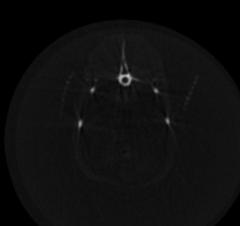Project 3816: T. Spanke, L. Hilgers, B. Wipfler, J. M. Flury, A. W. Nolte, I. V. Utama, B. Misof, F. Herder, J. Schwarzer. 2021. Complex sexually dimorphic traits shape the parallel evolution of a novel reproductive strategy in Sulawesi ricefishes (Adrianichthyidae). BMC Ecology and Evolution. 21:none yet.
Abstract
BackgroundPelvic brooding is a form of uni-parental care, and likely evolved in parallel in two lineages of Sulawesi ricefishes. Contrary to all other ricefishes, females of pelvic brooding species do not deposit eggs at a substrate (transfer brooding), but carry them until the fry hatches. We assume that modifications reducing the costs of egg carrying are beneficial for pelvic brooding females, but likely disadvantageous in conspecific males, which might be resolved by the evolution of sexual dimorphism via sexual antagonistic selection. Thus we hypothesize that the evolution of pelvic brooding gave rise to female-specific skeletal adaptations that are shared by both pelvic brooding lineages, but are absent in conspecific males and transfer brooding species. To tackle this, we combine 3D-imaging and morphometrics to analyze skeletal adaptations to pelvic brooding.Results
The morphology of skeletal traits correlated with sex and brooding strategy across seven ricefish species. Pelvic brooding females have short ribs caudal of the pelvic girdle forming a ventral concavity and clearly elongated and thickened pelvic fins compared to both sexes of transfer brooding species. The ventral concavity limits the body cavity volume in female pelvic brooders. Thus body volumes are smaller compared to males in pelvic brooding species, a pattern sharply contrasted by transfer brooding species.Conclusions
We showed in a comparative framework that highly similar, sexually dimorphic traits evolved in parallel in both lineages of pelvic brooding ricefish species. Key traits, present in all pelvic brooding females, were absent or much less pronounced in conspecific males and both sexes of transfer brooding species, indicating that they are non-beneficial or even maladaptive for ricefishes not providing extended care. We assume that the combination of ventral concavity and robust, elongated fins reduces drag of brooding females and provides protection and stability to the egg cluster. Thus ricefishes are one of the rare examples where environmental factors rather than sexual selection shaped the evolution of sexually dimorphic skeletal adaptations.
Read the article »
Article DOI: 10.1186/s12862-021-01791-z
Project DOI: 10.7934/P3816, http://dx.doi.org/10.7934/P3816
| This project contains |
|---|
Download Project SDD File |
Currently Viewing:
MorphoBank Project 3816
MorphoBank Project 3816
- Creation Date:
29 September 2020 - Publication Date:
31 March 2021 - Media downloads: 2

Authors' Institutions ![]()
- Indonesian Institute Of Sciences
- University of Oldenburg
- Zoologisches Forschungsmuseum Alexander Koenig
Members
| member name | taxa |
specimens |
media |
| Tobias Spanke Project Administrator | 7 | 30 | 42 |
Project has no matrices defined.
Project downloads 
| type | number of downloads | Individual items downloaded (where applicable) |
| Total downloads from project | 85 | |
| Media downloads | 2 | M739959 (1 download); M739957 (1 download); |
| Project downloads | 83 |

